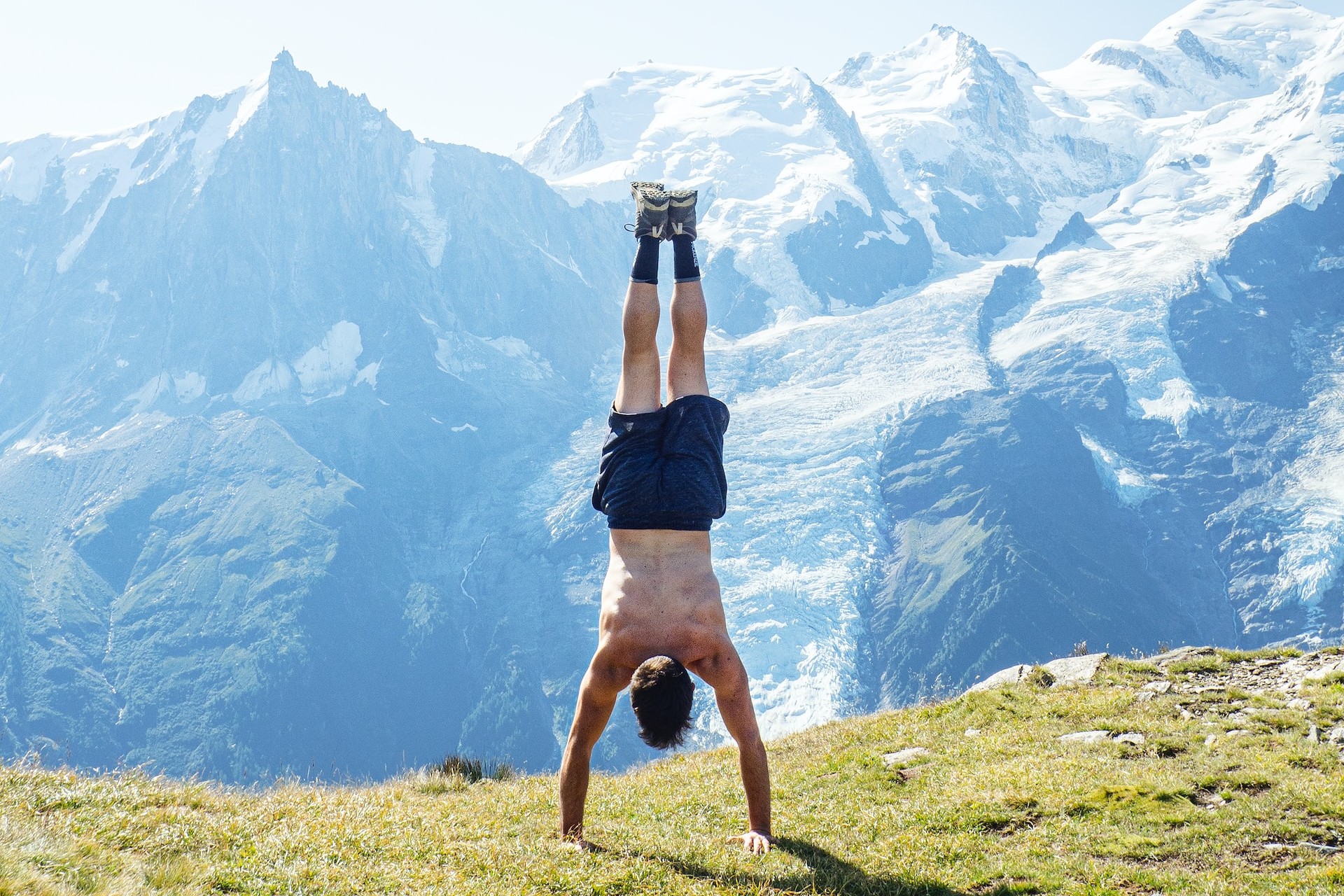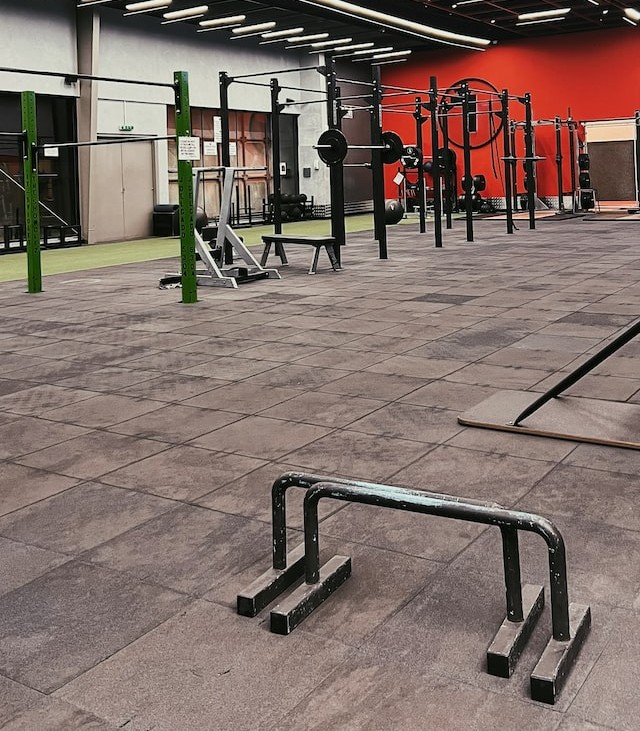Beginner Calisthenics Guide

What is Calisthenics?
Calisthenics is a type of physical training where resistance is provided by one’s own bodyweight.
Gymnastics can be considered to be a formal version of calisthenics where every exercise has been standardized and graded according to difficulty. Street Workout is a modern version of calisthenics combined with parkour, typically focused on style and improvisation.
The word calisthenics is a combination of two greek words, kallos (“beauty”) and sthenos (“strength”). However, the word itself does not have a clear origin.
How is Calisthenics different from Weight Training?
Unlike calisthenics, weight training is all about training with the resistance of an external weight. Barbells, dumbbells, machines are some examples of equipment used for weight training. There are different benefits to both types of training and it may be advisable to include both calisthenics and weight training in your program.
Benefits of Calisthenics
Calisthenics can be done anywhere
Performing weight training usually requires a barbell, dumbbells, and a variety of machines. Many calisthenics exercises can be done anywhere with no equipment.
Calisthenics can be more fun
Weight training can become repetitive. There is more variety of exercises in calisthenics and the exercises themselves can feel more fun.
Learn to control your body better
Training calisthenics will improve your balance, coordination, and flexibility. Improving your body control will likely translate well to other everyday activities.
Benefits of Weight Training
Easier to start
Calisthenics exercises require a certain level of strength and body composition to perform. Complete beginners may find weight training to be easier to start with.
Easier to track progress and keep making progress
With weight training, exercise difficulty can be increased by progressively adding weight to it. That’s very easy to track and measure. With calisthenics on other hand when just starting out, exercises are often made easier with momentum and improper form. After a month of training, you may still only able to do the same number of pull ups as before but the quality of the pull ups will have increased significantly.
Can target specific muscles
With calisthenics, the exercises in general will involve several muscle groups. But there are many weight training exercises available that will target specific muscles. That’s a good way to fix weak spots and achieve a desired look.
Leg Training
Calisthenics exercises tend to focus on upper body. If you want to build massive legs, weight training is a more suitable program.

What equipment do I need for calisthenics?
While you don’t need any equipment to get started with calisthenics, a pull-up bar is essential to keep making progress. Resistance bands may be useful to make some exercises easier or harder. As you keep making progress, consider adding dip bars, parallettes, and gymnastics rings to your inventory to unlock more advanced exercises.
Am I too old to start calisthenics?
Professional gymnasts start training at a very young age. That’s because competing in gymnastics is not just about raw muscle power but fine motor control and flow that take years to learn. Starting older means having to undo incorrect movement patterns that your body has learned. That being said, it is never too late to start learning to control your own body better. Maybe you won’t become a professional gymnast but you will become visibly and measureably stronger.
How to start Calisthenics?
When starting out with calisthenics, you can focus on 5 exercises.
- Hollow body hold. This exercise just requires you to lie on your back. Keep your feet and shoulders off the floor and hold. This is a fundamental exercise for calisthenics since many other exercises will require to be able to keep your core engaged.
- Crunches. Another core exercise is on this list because core is so vital for everything moving forward. Strong core will help you maintain proper form and will reduce chance of injury.
- Pull up. If you can’t yet do a pull up, there are a couple of options. If you have access to a resistance band, you can wrap the band around the bar, and step on it for assistance with the pull up. Alternatively, you could try jumping pull ups to help you get started at the bottom. A chin up, where you grip the bar with palms facing you, might also be an easier variation.
- Push up. Probably the most versatile exercise there is. Can be done anywhere, easy to adjust the difficulty, lots of variations to target different muscles. If a regular push up is too difficult, you can start by placing your hands on an elevated surface.
- Squat. The fundamental lower body exercise. Learning proper form will transfer well to picking up heavy objects in everyday life.
Calisthenics Workout Routine
After you have trained the 5 exercises above for a few weeks and feel like you have a good grasp of them, it’s time to start adding variety to your workouts. Here is an example routine you can use if you’re training 3 days a week. This is a full-body split, for more in-depth information, check our body split guides to determine which one is best for you.
Session 1
- Chin Ups [4x8]
- Wide grip push ups [4x8]
- Squats [4x20]
- Crunches [4x20]
- Hollow body hold [3x20s]
Session 2
- Bird Dog [3x10]
- Step down [3x10]
- Inverted row [4x10]
- Hanging leg raises [3x8]
- Russian Twist [3x20]
Session 3
- Pull ups [4x8]
- Close grip push ups [4x8]
- Lunges [4x20]
- Hollow body hold [3x20s]
How to keep making progress?
- Consistency. If you are skipping workouts and only train a couple times a month then you are essentially running in place. You need to send consistent signal to your body via training in order for your muscles to grow and become stronger.
- Sleep. While training is the stimulus your body needs to grow and strengthen the muscles, periods of rest is when that process actually takes place. And sleep is probably the best method of rest and recovery there is. If you are not giving your body sufficient time to recover, you workout sessions might be a waste of time.
- Diet. Since protein is the dominant structural component of a muscle and vital for other bodily functions, it’s important to take in enough protein for your body to keep building muscle. How much protein is required? That’s a difficult question that a lot of scientific studies have been trying to answer. Ultimately, you’ll have to experiment to find out what works best for you. Lastly, it’s also important to consider the quality of your food. Eating real food (food that you probably have to cook yourself) will have better impact on your body composition than highly processed products.
- Breath. Once you become strong enough to perform many repetitions of an exercise, your cardiovascular system might become the limiting factor. Your muscles need oxygen to keep functioning and if you’re not breathing properly then you’re starving your muscles of important resource. A lot of people breathe shallowly through their mouth with their chest. It’s important to learn to breathe-in deeply through through the nose into your stomach with your diaphragm.
- Explosive and isometric exercises. A muscle is made up of different fibers, mainly Type I and Type IIa. Type I are the smaller fibers that are adapted for endurance while Type IIa are bigger but fatigue quickly. Type I fibers seem to have lower growth potential relative to Type IIa. According to Henneman’s size principle, the smaller fibers are recruited first and the larger fibers are only recruited when necessary. What does this mean for training? As your body adapts to bodyweight exercises, fewer muscle fibers will be engaged during exercise. In order to maximize muscle growth, your training program should challenge the muscle with a variety of exercises to ensure that all types of fibers contribute to the contraction. To increase Type IIa recruitment, we need to add higher intensity exercises that can only be done for a few reps as well as isometric holds. Training to failure and performing drop sets might also increase muscle growth.
Do I need a coach?
A coach can be a great resource for any kind of training. A coach can explain and show how to perform an exercise, check and correct your form, create a workout and nutrition plan that's right for you, and keep you accountable. However, not everyone can find a good coach, let alone afford one. We have created Laurel to help you be your own coach. Use it as just a convenient workout journal or get workouts assigned to you that fit your experience level. Set and track your own goals to keep you motivated and recognize the progress you're making. Track wellness data to make sure your training effort is not wasted. Review important metrics to understand what changes you need to make to your program to keep improving.